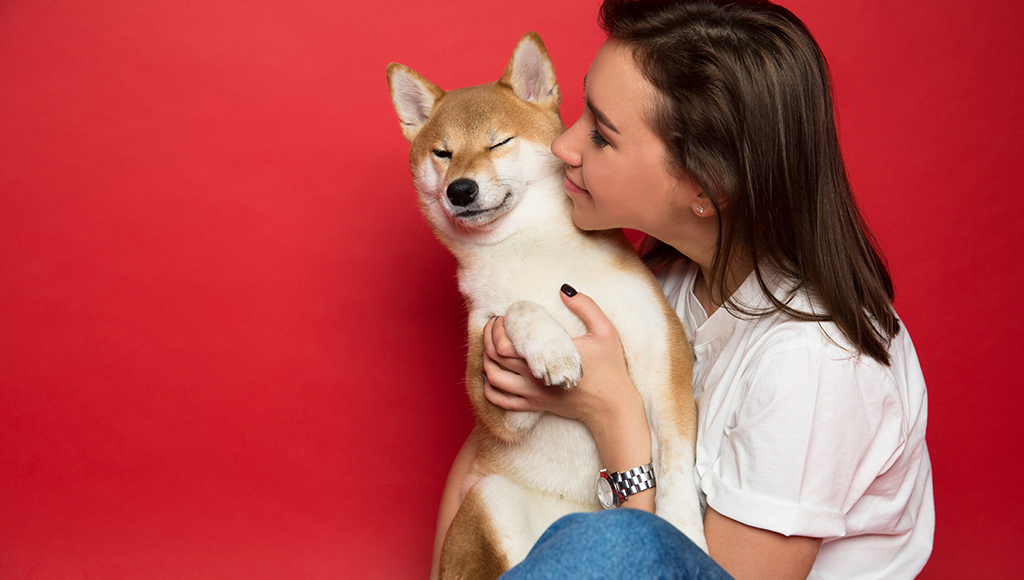Vision Disorders Found in Canines
Many common eye problems in dogs are treatable

Dogs of any breed can have issues with their eyes, either due to injury, infections or genetic conditions; some breeds are more likely to have eye problems than others. Of course dogs with very prominent eyes are more likely to have eye injuries, just because of the shape of the eye in relation to the skull and face. The most common eye problems in dogs are typically treatable, and even some of the genetic or congenital conditions of the eyes can be adverted with surgical correction. Researching each dog breed and checking the history of any eye or vision problem in either parent line when purchasing a puppy is important.
Canine eye problems are common, and can range from something as simple and easy to treat as conjunctiva (a minor soreness in the supporting tissue around the eye) to something much more severe like a corneal ulcer (where the internal contents of the eye can actually protrude through the corneal surface). Unfortunately, owners often put their dogs at risk when uncertain which problems require immediate medical attention and which ones are less severe. It is so difficult to evaluate the true nature or determine the actual severity of an eye problem simply by an owner's verbal description. Therefore, most veterinarians and their staff realize the importance of expediting calls regarding eye problems, to help ensure the dog gets the best treatment.
Let's take the “squinting dog” as an example. Surely any dog might develop a mild irritation in an eye and squint for a few moments; extra tear production is then probably, too. However, without direct examination of the eye and surrounding structures, no one (not even a Specialist in Veterinary Ophthalmology) would know if the squinting is due to a tiny scratch on the cornea, a cinder hiding beneath the third eyelid or a penetrating wound from an eye injury. Without an examination, something that looks as harmless as an innocent looking squint could be the very first signs of systemic diseases, such as Blastomycosis or cancer.
A good general rule for all dog owners to follow is to have any eye or adjacent tissue dysfunction evaluated immediately by a veterinarian. With eye injuries, the sooner you identify the specific problems and treat them, the better the chance of saving eye function.
During routine physical exams, internal disorders are apparent with subtle changes in the normal appearance of eye structures. A yellowish appearance of the normally white sclera, undetected by the pet's caretaker, signals to the veterinarian that there is likely to be a liver or red blood cell dysfunction. A faint haziness in the normally transparent cornea can prompt the need to evaluate liver or pancreas function. Tumors of any kind in the eye structures can grow and need medical attention at the earliest possible time in their development.
Common Eye Disorders Found in Puppies
If you are about to acquire a new puppy, be sure to learn about common eye disorders for the breed you have chosen. For example, Cocker Spaniels frequently develop dry eye and glaucoma. Bichon Frise, Cocker Spaniels, Poodles, and Boston Terriers are breeds that often develop cataracts. If a potential owner is aware that the breed they are interested in has inherited eye problems, they can educate themselves about indicating signs. The more you know about your preferred breed the better your chances of obtaining a healthy dog.
Here is a list of some common ocular problems found in puppies. Familiarize with these disorders and prepare to closely scrutinize any new puppy for signs of these common difficulties:
- Entropion - The inward reversal or rolling of the eyelids
so the eyelashes are scratching against the surface of the eye. Typically the
lower eyelid is the affected area. However, it can occur on the upper eyelid
as well.
Many puppies will develop this early in life, but it can also occur at any time, especially in dogs with lots of skin in the face area, such as the Mastiffs and Bulldogs. It is treatable with a small surgical procedure that pulls the eyelid back into place. Without treatment or correction, the eye will suffer infection and there may be partial to full vision loss over time. Shar Pei, Cocker Spaniel, Rottweiler, Labrador Retriever) - Cherry Eye - Prolapsed gland of the third eyelid. (Bulldogs, Cocker Spaniels, Poodles)
- Ectopic Cilia - An abnormal eyelash that grows through the conjunctiva, and is usually very painful and almost always causes an ulcer.
- Distichiasis - Abnormal position of eyelashes on a lid margin resulting in eye irritation.
- Dermoid - Congenital defect where haired skin is located in an abnormal place on an eye, and will often irritate the cornea and cause ulcers.
- Cataracts - Opacity of the lens. Inherited cataracts can often appear in young dogs; in most cases a veterinarian or veterinary ophthalmologist will have to make this diagnosis since owners are often unaware of small focal cataracts. The lens of the eye becomes opaque and rigid, preventing focus and gradually causing vision loss. After cataract removal, an artificial lens is surgically implanted; however, not all will become significant enough to require this treatment. There are also late onset cataracts that may not show up until middle or older age.
- Follicular Conjunctivitis - Itchy, reddened conjunctival tissues, tearing, squinting; often related to allergies.
- Puppy Pyoderma or Puppy Strangles - Eyelid abscesses associated with generalized skin pustules.
- Dry Eye (Keratoconjunctivitis sicca or KCS) - Lack of or inadequate production of tears. Sometimes this can be congenital, in which case it is often very serious. Tear production can stop for a number of different reasons including plugging of the tear ducts, infections, and even some diseases such as distemper. In advanced states, KCS can result in blindness as the eye damage becomes permanent. (Pug, Lhasa Apso and Shih Tzu are some of the breeds that may be born with dry eyes)
- Excessive Tearing - Typically, a sign of eye
infections and irritations; especially obvious on light colored dogs. The
tears create a moist, hot area around the eyes that allows bacteria to grow.
The reddish color noted on many dogs, known as Red Yeast, can be very
problematic. In some cases blocked tear ducts may also lead to excessive
tearing and bacterial infections.
Treatment may include surgical opening or modification of the tear ducts, treatments with antibiotics to control bacterial infections, as well as routine cleaning, drying and clipping of the area around the eye.
Conditions that the owner may think are trivial may in fact be the early stages of something more serious. Often dogs are stoic and do not exhibit blatant signs of pain. Don't be a fool to subtle eye problems; they may not be so innocent after all. Do a thorough inspection of any new pup's eyes and associated structures before you decide to make it a part of your “family” or breeding stock. With any dog, if ordinary first aid provides no improvement in eye discomfort within 12 hours, be sure to obtain a veterinarian's evaluation immediately.
Common Home Remedies
Ordinary Eye Wash (Sterile Buffered Saline) is proper to use in a dog's eye to clean the eye, but it will not be helpful for an inflamed, sore eye. For a red, sore eye seek veterinary attention immediately. You should not use Visine. It is not therapeutic; it merely makes the eyes less red for a short time. It can also be potentially harmful in some conditions. Artificial tear drops or ointments are usually not harmful and may be soothing for some dry eye conditions, but we urge advice of a veterinarian in any case.
Any eye abnormalities need veterinarian attention as soon as possible. Remember some eye conditions can result in permanent blindness, so early treatment is imperative.
Ready to start saving money on pet wellness care?
Then take a look at Mint Wellness, the pet wellness plan that provides fast reimbursement on routine pet care. Save on vaccinations, wellness exams, preventatives, dental, and more!
Learn More


